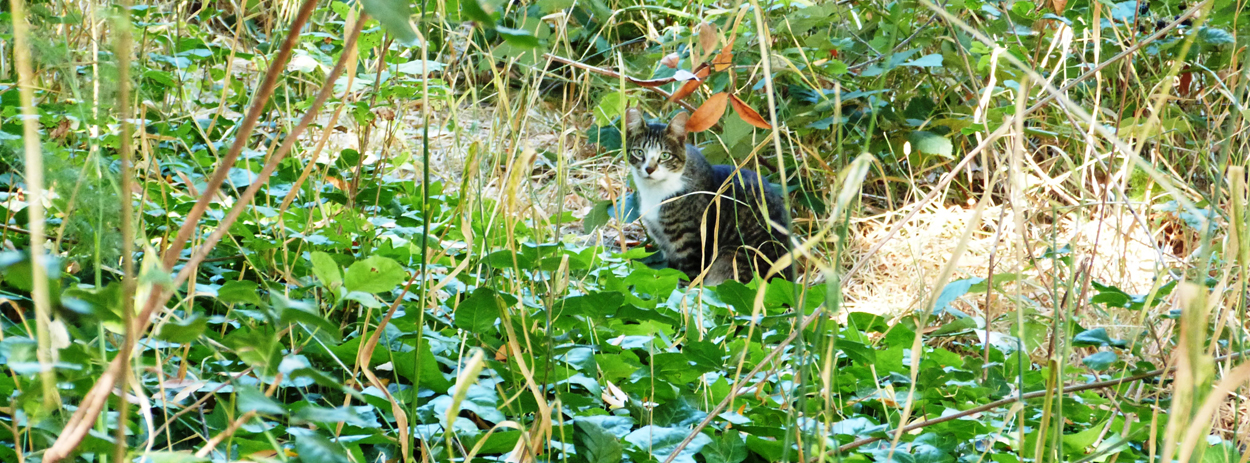IF YOU FEED COMMUNITY CATS

If you or your neighbors are feeding the cats, try to be sure it’s on a regular schedule each day. This will ensure that the cats are well-fed and won’t search the neighborhood or the wilderness for their next meal. In addition, only leave the amount of food that a cat would eat in a single feeding. Food shouldn’t be left out all day in order to avoid attracting other wildlife or insects.
The following tips will also help ensure the cats are tended humanely with minimum disruption to our environment:
1. Trap-Neuter-Return!
This is the single most important thing you to do. If you care about cats, prevent future generations of cats by ensuring that kittens are not born into an uncertain future.
2. Build a Feeding Station
Providing food and water in a private, calm, and safe location may reduce the likelihood of cats bothering neighbors. The ideal feeding station will have a raised floor to deter bugs, and a slanted roof to keep the food and the cats safe from the elements. Don’t feed near high-traffic areas, where they sleep, or where they typically relieve themselves.
And remember, keep it clean! Remove all garbage and leftover food every day to keep the feeding area sanitary and unobtrusive, and doesn’t attract wildlife.
3. Provide Outdoor Shelters
Shelters located on your property, or other agreed upon property will encourage cats to remain in that area, rather than venture onto other properties where their presence is not appreciated. The more hidden these shelters are, the more comfortable the cats will be to use them. A dog house, Igloo, or homemade house that is about 2ft by 3ft and 18 in high is an ideal shelter for up to five cats. Shelters should be placed in secluded areas far from areas they aren’t welcomed.
4. Provide Clean Outdoor Litter Boxes
Strategically placed outdoor litter boxes that are regularly cleaned make cats far less likely to use neighbors’ yards and gardens for elimination.
To build an outdoor litter box, you simply need a frame of four low walls that are the appropriate height for the cats in the area (kittens need lower walls so they can crawl in and out easily). Don’t worry about building a bottom for the litter box because you will need to allow for drainage. Be strategic in placing your box, and opt for areas that cats typically frequent. Choose a location that is quiet and sheltered.
Fill the box with sandbox sand that you find at most hardware stares. Don’t use conventional litter, which absorbs water and will be ruined by the weather. You only need enough sand in the litter box for the cats to dig comfortably. If cats are not using the box at first, sprinkle some Dr. Elsey’s Cat Attract (found on Amazon.com), which is an herbal attractant with a scent that cats love.
Keep litter box areas as clean as possible to ensure the cats will continue to use them. All litter boxes must be scooped regularly to reduce odors and keep flies away.
5. Keep Tabs on the Kitties
Feeding time is a great opportunity to take stock of the health of our community cats, and to identify new cats in the area. Sick or injured cats should be humanely trapped and taken to the veterinarian for care, and any new cats (without an ear tip) should be trapped, spayed/neutered, and returned.
Remember: community cats are our responsibility. We all need to do our part.
Adapted from Alley Cat Allies. All rights reserved.























































